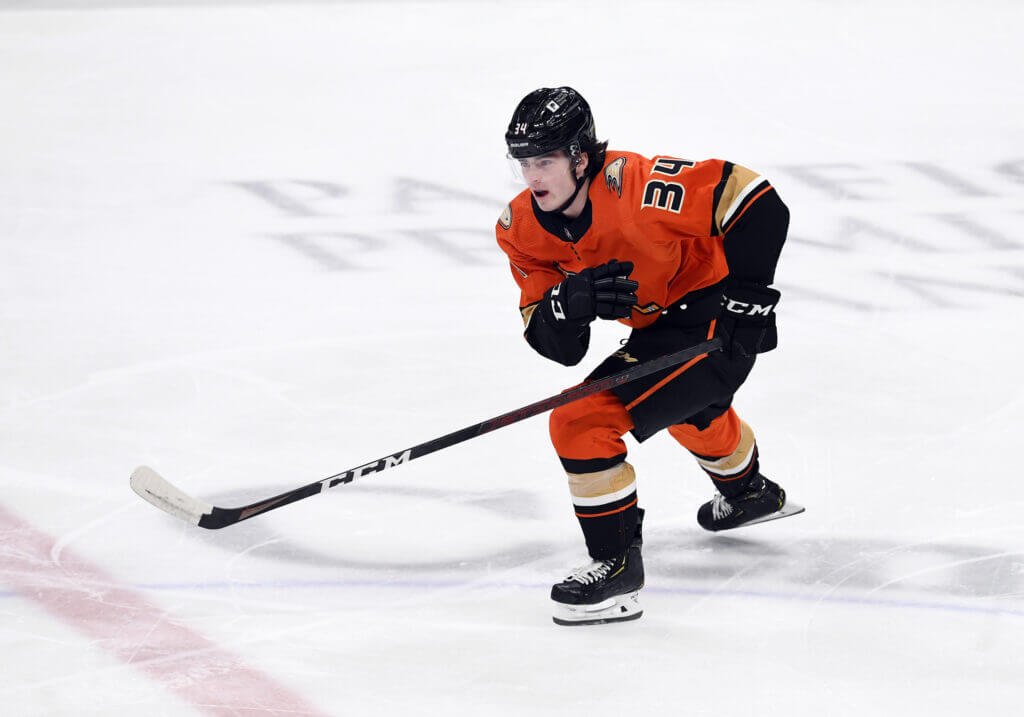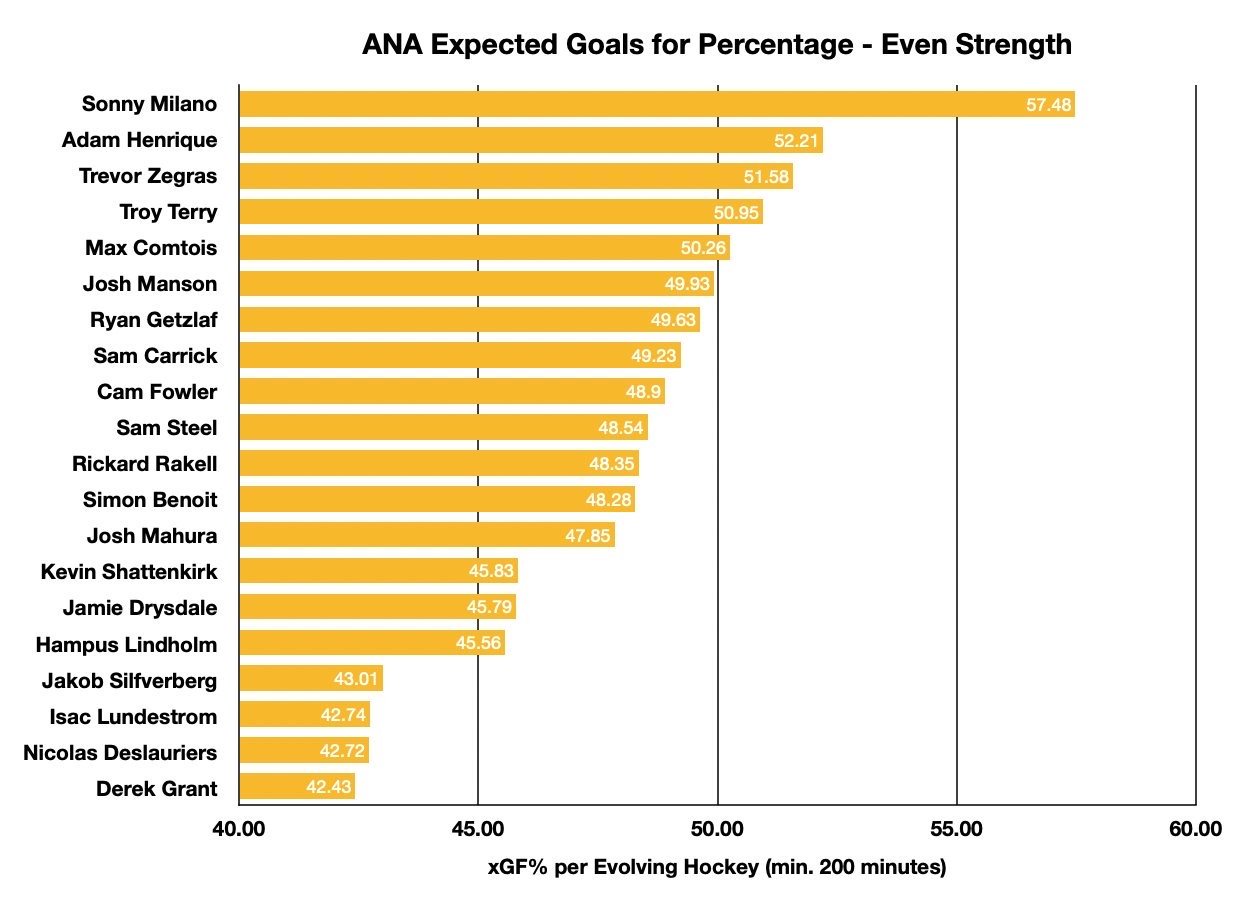The Ducks should send Jamie Drysdale to the San Diego Gulls
If there’s one thing I’ve learned covering hockey over the years, it’s that a lot of fans get very upset when you insinuate a top prospect might not be doing well. And I get that on some level. There’s hype around them and all of the talk, previous draft position, and even previous results in juniors or the AHL indicate that this player is the franchise’s next cornerstone piece.
The problem is that prospects are incredibly hard to predict. In fact, prospect evaluation is arguably the most difficult aspect of the game of hockey to get right. And, perhaps more importantly, development is rarely linear. But when it comes to evaluating young players, it’s important to consider their current and most recent results to help determine the path they should take to maximize their chances of developmental success.
Such is the crossroads we are at with the Ducks best defensive prospect, Jamie Drysdale. After being taken 6th overall in the 2020 NHL Entry Draft by Anaheim, Drysdale made his NHL debut in the COVID-shortened 2020 season thanks to a good performance in San Diego and the fact that his junior team, the Erie Otters of the OHL, had their season suspended.
Now a full-time NHLer at age 19, Drysdale has been thrust into one of the most important roles on the team: that of a top-4 defenseman playing alongside Hampus Lindholm. This sounds amazing and seems like it has been an incredible opportunity for him. Unfortunately, the results have not matched the role to this point.
Player card using GAR (goals above replacement), a metric that shows how many goals a player has contributed to their team above a replacement player’s level (think a player who bounces between the AHL and the NHL a lot).
You don’t need a statistics degree to see that these are not good numbers. While they’re certainly not horrible, they represent a significant gap between his reputation and potential, and his actual play.
Drysdale this season is in the 12th percentile in offensive GAR, and 31st percentile in defensive GAR. Combine the impacts of those two numbers, and Drysdale sits in just the 18th percentile of all NHL players in overall impact.
Why is this the case?
The skillset
To understand Drysdale as a player, we need to look at the skills he brings and why he was taken at 6th overall in the draft. There are a few reasons, but the number one reason far and away is his skating ability. At just 18 years old, most scouts already had Drysdale’s skating as NHL-ready. You can see this clear as day when you watch him play with the puck on his stick. He has good speed, but he’s not the fastest. Where he shines is his technique and lateral movement. Drysdale’s ability to dance around skaters both forwards and backwards using crossovers and body positioning is mesmerizing, and we’ve seen plenty of examples of him doing this at the NHL level.
Does this sound familiar to you? It should. Because Cam Fowler’s strengths as a player are pretty much the same. Fowler uses his skating ability to get out of sticky situations and, most effectively, break the puck out of his own zone at a rate that’s historically been one of the highest in the NHL, as evidenced by this article from Shayna Goldman for Sportsnet earlier this season.
It essentially boils down to this: put the puck on Drysdale’s stick, and good things happen. His skating is good enough to lead breakouts and get the puck quickly into the offensive zone to set up scoring chances. This is primarily what made Drysdale the top-ranked defenseman of the 2020 draft.
Unfortunately, that’s not what is happening here. My original hypothesis when beginning this article was that Drysdale had been deferring to Lindholm for breakouts and was supporting the transitional play, rather than lead it. However, upon digging into Corey Sznajder’s tracking data, I was surprised to discover that both Drysdale and Lindholm are breaking the puck out at roughly the same rates at 5v5.
The image is cut off: the x-axis is Zone Exits per 60
So what is happening, then? I think it’s a couple of things. The first is that it’s not often we see Drysdale skate the puck out of the zone. Yes he ranks fairly well in rate stats for controlled zone exits, but he doesn’t do it nearly as often as he probably should. Is it a coaching issue where they’ve told him to look for the pass first? Possibly. Is it a Drysdale problem where maybe he has the opportunity to skate it out with a controlled exit and doesn’t for whatever reason, be it confidence or otherwise? Also possible. It’s likely some combination of these two factors. And, as you can imagine, looking for the pass first instead of using his legs to get the puck out isn’t exactly optimizing his skillset, especially if it leads to chipping the puck out.
The other issue is puck retrievals. And this is something that Corey’s data illuminates very well here compared to Drysdale’s partner, Lindholm.
This chart shows which players are best at retrieving the puck in their own zone and turning it into a zone exit. Note that this is any kind of zone exit, not just controlled (i.e. skating the puck out, passing it out, chipping it off the boards and out, etc.). While Drysdale and Lindholm break the puck out at similar rates, there’s a fairly stark difference in their retrieval rate. Lindholm is retrieving pucks in his own zone at a rate of over 20% more than Drysdale. This means Drysdale isn’t getting as many chances to utilize his skating effectively as far as breakouts go, and is likely leading to teams getting more chances to gain possession and generate shots and scoring chances against him.
The offense
The other issue here is his offense. While we’re not really expecting Drysdale to go full Cale Makar and be a scoring machine, his skating should theoretically allow him to get and contribute to shots in dangerous areas. Unfortunately, this hasn’t been the case, with the vast majority of his shots at both 5v5 and on the power play coming from way out at the point.
His on-ice numbers reflect both his individual shots and his impact on-ice, which is represented by his expected goals numbers.
To put all of this simply: he’s not getting shots off or enabling his teammates to get shots off from dangerous areas at a high rate. This all comes back to his skating ability: his bread and butter. He is taking the safe route by primarily generating shots from the low-percentage distances. With his skating ability, he absolutely has the potential to bump up these dangerous shot rates significantly by pressing the issue down low as well as picking the ideal opportunities to activate from his blueline. Basically, if he sees any amount of open ice in front of him, he should probably consider using it to his advantage.
The verdict
Is Drysdale capable of improving upon these issues at the NHL level? Sure. But is that the ideal environment for him? I would argue, no. He’s still only 19 with a long career ahead of him. And while the Ducks have had much more success than nearly anyone could have predicted this year, it’s clear to anyone who can see below the surface that this team still has work to do before it becomes a true playoff contender. The Ducks are still in rebuild mode, despite what the standings points might say. Luckily, the team just hired a new General Manager in Pat Verbeek, who shares this view.
Sending him back to the San Diego Gulls to play against some weaker competition, work on both his confidence and decision-making skills, and use his outstanding skating ability more effectively to generate offense would do wonders for him as a player.
The Anaheim Ducks organization has admitted that the way it handled Cam Fowler’s development was a mistake—giving him a full-time, important NHL role right after being drafted undoubtedly hampered his progress. Even though Fowler has turned into one of the Ducks best defenders, it took quite a while for that to happen, and the Ducks missed out on what should have been his prime years right in the middle of their peak contention window.
With the Ducks new contention window now on the horizon, it’s critical that the team does not repeat the mistakes of the past. Drysdale can and should be part of the core group of players leading the team in its next phase, and the organization should be doing everything they can to maximize his chances of success.
The best way they can do that right now? Send him back to San Diego. It doesn’t have to be a long stint, depending on his results and progress. But it would be in the best interest for both Drysdale and the Ducks if it happened sooner rather than later.







